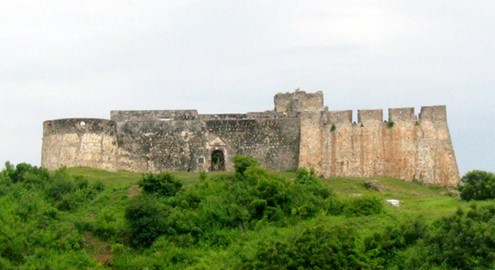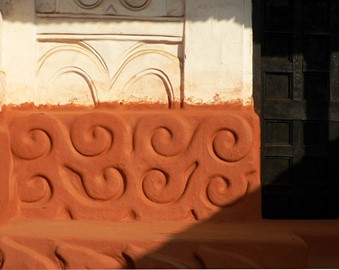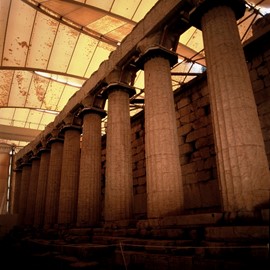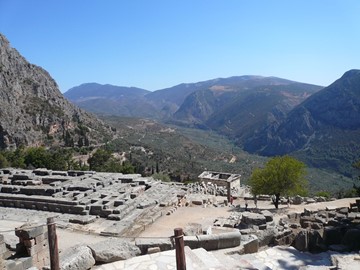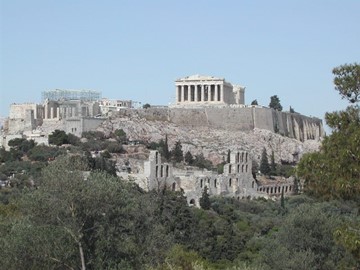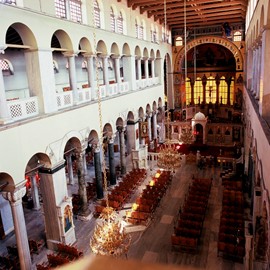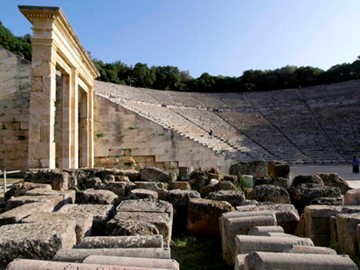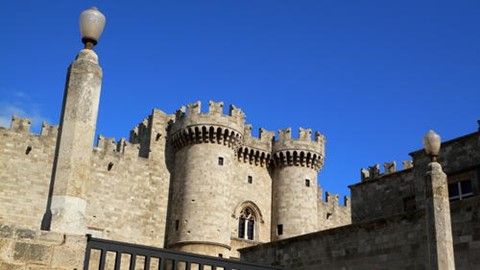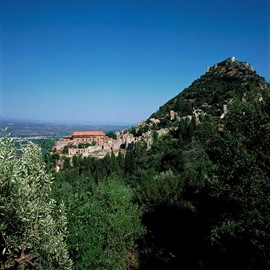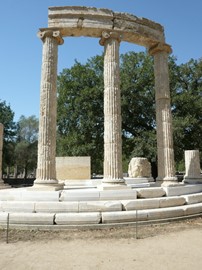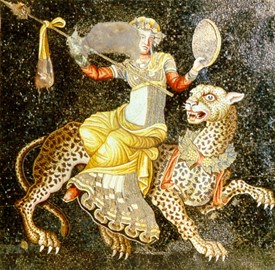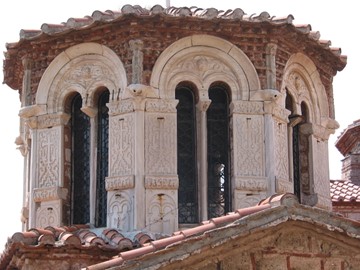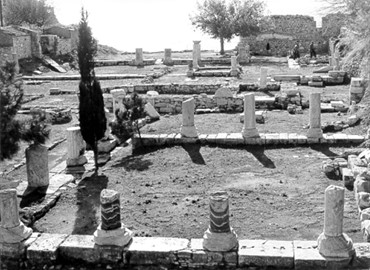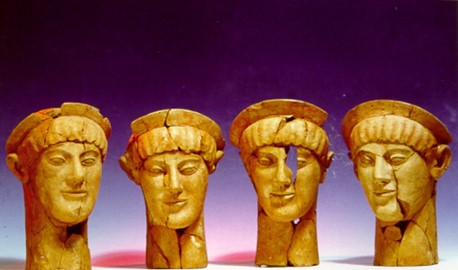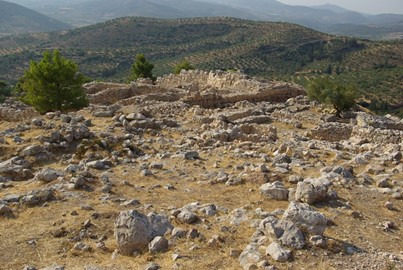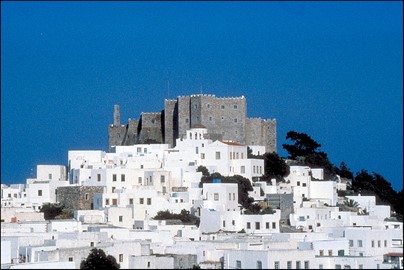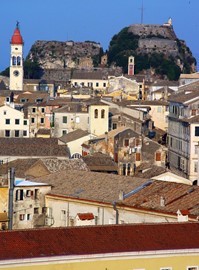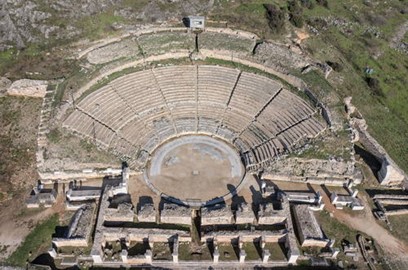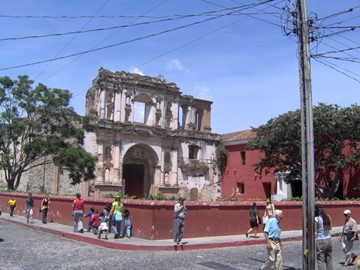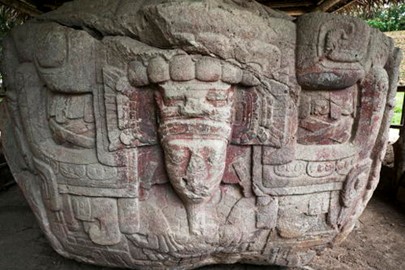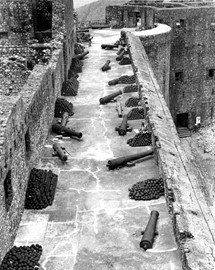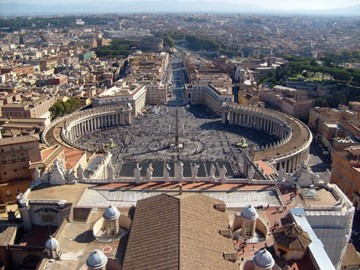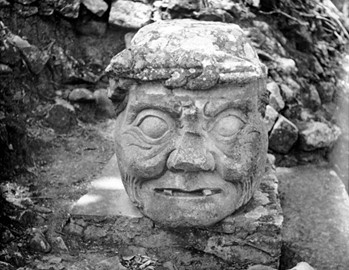category :: cultural
Forts and Castles of Ghana
The Forts and Castles of Ghana, a UNESCO World Heritage site, comprise a collection of historic fortifications built between the 15th and 18th centuries by European traders and colonial powers. These structures, originally established for trade in gold and later used in the transatlantic slave trade, reflect a unique blend of European and African architectural influences. Key examples include Elmina Castle and Cape Coast Castle, which served as major hubs for commerce and human trafficking. Today, they stan... Read More
Asante Traditional Buildings
The Asante Traditional Buildings, a UNESCO World Heritage site in Ghana, showcase the architectural prowess and cultural heritage of the Asante people. Constructed primarily from mud, timber, and thatch, these structures feature intricate designs and vibrant colors, reflecting the society’s spiritual beliefs and social hierarchy. Built in the 18th and 19th centuries, they served as residences for chiefs and priests, embodying the power and wealth of the Asante Kingdom. Today, these well-preserved buildings ... Read More
Temple of Apollo Epicurius
The Temple of Apollo Epicurius, a UNESCO World Heritage site in Greece, is an ancient Greek temple renowned for its well-preserved architecture and historical significance. Built in the 5th century BCE, it is attributed to Iktinos, the architect of the Parthenon, and features a unique blend of Doric, Ionic, and Corinthian styles. Dedicated to Apollo, the god of healing, it served as a sanctuary for worship and medical relief. Its innovative design includes an early use of interior columns and a north-south ... Read More
Delphi
Delphi, a UNESCO World Heritage site in Greece, is an ancient archaeological treasure renowned for its historical and cultural significance. Once a major religious sanctuary, it housed the famous Oracle of Delphi, where priestesses delivered prophetic messages from the god Apollo. The site features well-preserved ruins, including the Temple of Apollo, an ancient theater, and a stadium, reflecting its past as a center for worship and athletic events. Its stunning natural setting enhances its allure, making i... Read More
Acropolis
The Acropolis, a UNESCO World Heritage site in Greece, is an ancient citadel perched atop a rocky hill, renowned for its historical and architectural significance. Constructed primarily in the 5th century BCE, it houses iconic structures like the Parthenon, a temple dedicated to Athena, showcasing classical Greek art and engineering. The site served as a political and religious center in antiquity, reflecting the power and culture of ancient Athens. Today, it stands as a global symbol of democracy and Weste... Read More
Thessalonika
Thessaloniki, a UNESCO World Heritage site in Greece, is a historic city renowned for its rich cultural tapestry, blending Roman, Byzantine, and Ottoman influences. Founded in 315 BC, it boasts well-preserved landmarks like the White Tower, the Arch of Galerius, and numerous early Christian and Byzantine monuments, recognized for their architectural and artistic significance. As a key port on the Aegean Sea, it has long been a crossroads of trade and ideas, contributing to its vibrant heritage. Today, it st... Read More
Sanctuary of Asklepios
The Sanctuary of Asklepios, a UNESCO World Heritage site in Greece, is an ancient healing center dedicated to the god of medicine, Asklepios. Established in the 6th century BCE, it served as a renowned medical and religious complex where patients sought cures through rituals, dreams, and treatments. The site features impressive ruins, including a theater, temple, and therapeutic baths, reflecting its historical significance. Excavations have revealed artifacts that highlight its role as a pioneering hub of ... Read More
Rhodes
The Medieval City of Rhodes, a UNESCO World Heritage site, is a well-preserved historical gem in Greece, renowned for its impressive fortifications, cobblestone streets, and Gothic architecture. Built by the Knights of St. John in the 14th century, it reflects a blend of medieval European and local influences. The city’s massive walls, grand palaces, and ancient gates offer a glimpse into its storied past as a strategic stronghold. Today, it stands as a living museum, attracting visitors with its timeless c... Read More
Mystras
Mystras, a UNESCO World Heritage site in Greece, is a remarkably preserved medieval fortified town. Founded in the 13th century, it served as a Byzantine capital and cultural hub, boasting impressive architecture like palaces, churches, and monasteries adorned with intricate frescoes. Its historical significance lies in its role as a center of power and learning during the late Byzantine era. Today, it stands as a captivating testament to Greece’s rich past, drawing visitors to explore its winding streets a... Read More
Olympia
The Archaeological Site of Olympia, a UNESCO World Heritage site in Greece, is renowned as the birthplace of the Olympic Games, first held in 776 BCE. This ancient sanctuary features well-preserved ruins, including the Temple of Zeus, once home to a colossal gold-and-ivory statue of the god, and the stadium where athletes competed. The site also includes the workshop of sculptor Phidias and various structures tied to religious and athletic activities. Excavations have revealed artifacts showcasing its histo... Read More
Delos
Delos, a UNESCO World Heritage site in Greece, is a small, uninhabited island renowned for its rich archaeological significance. Once a thriving religious and commercial center in antiquity, it is celebrated as the mythological birthplace of Apollo and Artemis. The site features well-preserved ruins, including temples, mosaics, and the famous Terrace of the Lions, offering a glimpse into ancient Greek civilization. Today, it stands as a testament to its historical and cultural importance, attracting visitor... Read More
Daphni, Hosios Loukas and Nea Moni of Chios
Daphni, Hosios Loukas, and Nea Moni of Chios are three UNESCO World Heritage sites in Greece, renowned for their exceptional Byzantine architecture and art. These monasteries, dating from the 11th and 12th centuries, feature stunning mosaics and frescoes that exemplify the artistic and religious mastery of the era. Each site reflects the cultural and historical significance of the Byzantine Empire, offering a glimpse into its architectural innovation and spiritual heritage. Together, they stand as well-pres... Read More
Pythagoreion and Heraion of Samos
The Pythagoreion and Heraion of Samos, a UNESCO World Heritage site in Greece, encompass an ancient fortified port and a significant sanctuary dedicated to the goddess Hera. The Pythagoreion features impressive archaeological remains, including a sophisticated aqueduct tunnel and Roman baths, reflecting advanced engineering from the 6th century BC. Nearby, the Heraion, one of the largest temples of its time, showcases early Greek architecture and religious practices, with its single standing column as a str... Read More
Aigai
The Archaeological Site of Aigai, a UNESCO World Heritage site in Greece, is renowned as the ancient capital of the Macedonian kingdom, flourishing from the 11th century BCE. It features significant historical landmarks, including the royal tombs of Philip II, father of Alexander the Great, and an impressive theater where key events unfolded. Excavations reveal a well-preserved urban layout, palaces, and intricate burial sites, showcasing the architectural and cultural prowess of the era. This site offers i... Read More
Mycenae and Tiryns
The Archaeological Sites of Mycenae and Tiryns, recognized as a UNESCO World Heritage site, showcase the impressive remnants of two major centers of the Mycenaean civilization, flourishing from the 15th to 12th century BCE. These sites feature monumental cyclopean walls, elaborate palaces, and well-preserved tombs, reflecting the architectural and cultural achievements of this ancient Greek society. Excavations have uncovered artifacts like the famous Lion Gate and gold masks, offering insights into the wea... Read More
Pátmos Island
Pátmos Island, a UNESCO World Heritage site in Greece, is renowned for its historical and cultural significance. This small Aegean island is home to the Cave of the Apocalypse, where St. John the Evangelist is said to have received the visions recorded in the Book of Revelation, and the imposing Monastery of Saint John, a well-preserved example of Byzantine architecture. Its charming villages, pristine beaches, and serene atmosphere make it a unique destination steeped in spirituality and tradition.
Corfu
The Old Town of Corfu, a UNESCO World Heritage site in Greece, is a well-preserved example of a fortified Mediterranean port town. Its historic architecture reflects Venetian, French, and British influences, with narrow streets, elegant buildings, and two imposing fortresses. The site’s cultural significance and strategic location have made it a notable landmark, showcasing centuries of history in a compact, walkable area.
Philippi
Philippi, a UNESCO World Heritage site in Greece, is an ancient city renowned for its historical and cultural significance. Founded in 356 BC by Philip II of Macedon, it later became a key Roman center, notably as the site of the 42 BC Battle of Philippi. The site features well-preserved ruins, including a theater, basilicas, and the Octagon church, reflecting its rich Greek, Roman, and early Christian heritage. Today, Philippi stands as a testament to its pivotal role in shaping Mediterranean history.
Antigua Guatemala
Antigua, the capital of the Captaincy-General of Guatemala, was founded in the early 16th century. Built 1,500 m above sea-level, in an earthquake-prone region, it was largely destroyed by an earthquake in 1773 but its principal monuments are still preserved as ruins. In the space of under three centuries the city, which was built on a grid pattern inspired by the Italian Renaissance, acquired a number of superb monuments.
Quirigua
The Ruins of Quiriguá, a UNESCO World Heritage site in Guatemala, are an ancient Mayan archaeological treasure renowned for their intricately carved stelae and zoomorphs. Dating back to the 8th century, this once-thriving city showcases impressive monumental sculptures, including the tallest stone monolith in the Maya world, Stela E, standing over 35 feet. The site offers a glimpse into the region's rich history, art, and culture, preserved amidst a lush tropical setting, making it a significant destination... Read More
Citadel, Sans Souci, Ramiers
The National History Park – Citadel, Sans Souci, Ramiers is a UNESCO World Heritage site in Haiti, recognized for its historical and cultural significance. Dating to the early 19th century, it features the grand Citadel Laferrière, a massive mountaintop fortress, the elegant ruins of Sans Souci Palace, and the fortified Ramiers site, all built after Haiti’s independence. These structures stand as powerful symbols of liberty, constructed by formerly enslaved people who fought for and won their freedom.
Vatican City
Vatican City, a UNESCO World Heritage site in Rome, is an independent city-state enclaved within Italy, serving as the spiritual and administrative headquarters of the Roman Catholic Church. Home to iconic landmarks like St. Peter’s Basilica and the Sistine Chapel, it boasts a rich history and unparalleled artistic heritage, including Michelangelo’s masterpieces. Governed by the Holy See, it attracts millions of pilgrims and tourists annually, offering a unique blend of faith, culture, and tradition.
Copán
Copán, a UNESCO World Heritage site in Honduras, is an ancient Mayan city renowned for its intricate stone carvings, hieroglyphic stairway, and well-preserved ruins. Flourishing between the 5th and 9th centuries, it served as a major political and cultural center, showcasing advanced architecture and artistry. Today, it offers a glimpse into the sophisticated Mayan civilization, attracting visitors with its historical significance and archaeological treasures.
Budapest
Budapest, a UNESCO World Heritage site in Hungary, is renowned for its stunning architecture, rich history, and vibrant culture. The city seamlessly blends the historic charm of Buda, with its medieval castle and cobblestone streets, and the bustling energy of Pest, home to grand boulevards and the iconic Parliament building. Highlights include the thermal baths, a legacy of Roman and Ottoman influences, and the picturesque Danube River, spanned by elegant bridges like the Chain Bridge. Budapest offers a ca... Read More
Hollóko
Hollókő, a UNESCO World Heritage site in Hungary, is a well-preserved traditional village showcasing the country’s rural life and architecture. Known for its unique Palóc culture, the village features 17th- and 18th-century houses with whitewashed walls and wooden porches, reflecting historical building techniques. Its cobblestone streets and vibrant folk traditions, including annual festivals, draw visitors seeking an authentic glimpse into Hungary’s past. The site’s designation highlights its global cultu... Read More
